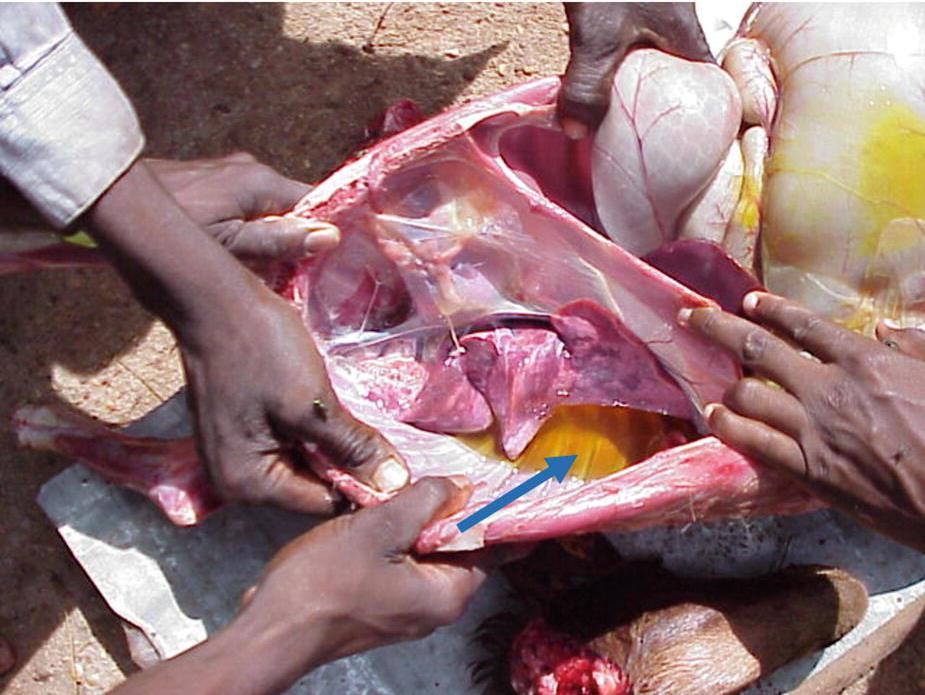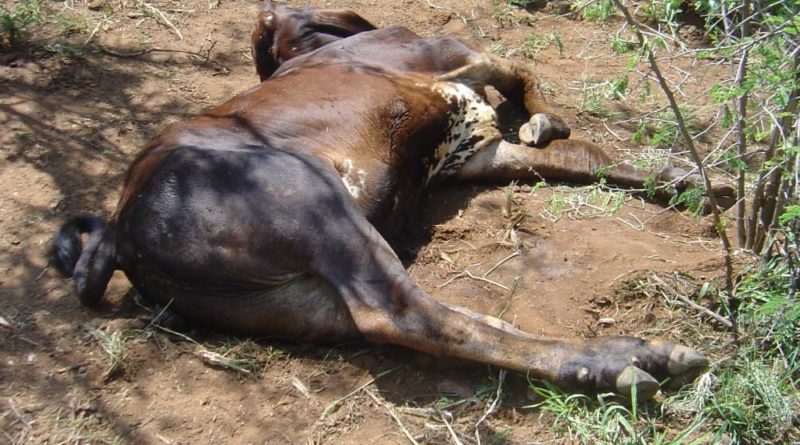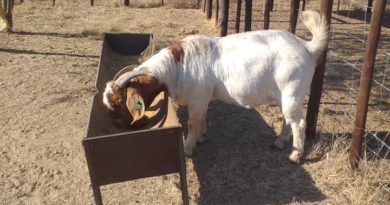Heartwater Disease
Photo: msdvetmanual
Heart water is a rickettsial disease transmitted by bout tick( Amblyomma hebraem) and the tropical bout tick( Amblyomma variegatum)
Animals affected
– Goats
– Sheep
– Cattle
– wild animals
Causes of Heartwater Disease
– It is transmitted by ticks (Amblyomma)
– When an uninfected tick feed on a sick animal, some of the heart water organisms land in the tick’s intestines where they develop further.
– The mature stage of the tick will then transmit the organism via the tick’s salivary glands to susceptible animal.
– The Amblyomma ticks are not born with rickettsia, they become infected when feeding on an animal which is a carrier.
– Thus making making Heart water a transtodial infection (stage to stage infection).
– This heart water organisms damages the blood capillaries causing fluid to leak out.
How does the animal get infected
– The rickettsia enter the body of the animal through a bite by an infected Amblyomma tick.
– The rickettsia travel in the blood to every part of the body.
– It then feeds and multiply in the endothelial cells of the blood vessels causing plasma leakage.
– Accumulation of the fluid in the heart sac and the thorax as such the heart is unable to beat normally and the pulse rate increases to maintain the blood supply to the body ( See below )

Photo: media.springernature.com/
– Damage of the brain blood vessels leads to nervous signs due to the disturbance of the blood supply.
Symptoms
– There is rise in body temperature of the animal to over 40 Degrees Celsius ( *Fever* ) almost the until they die.
– Followed by nervous signs characterized by muscle twitching around the eyes and lips and high stepping gait ( goose stepping-left up their legs up very high when they move) with coordinated leg movement.
– The animal will then go down with the head extended, sometimes the animal will be salivating. Photophobia.
– They grind their teeth and lick their lips.
– In other cases the animal may walk in circles ( circling movement).
– Animal lies on one side showing some galloping movements ( paddling movement) followed by convulsions and death.
– The nervous signs are due to the oedema in the brain. Blinking of eyelids, twitching of eyes.
– It is named heart water because fluids fill the pericardial sac causing respiratory distress.
– Animal may also have bloody diarrhea.
Post mortem
– Signs of running marks on the ground (paddling movement) where the animal has been lying.
– On opening there is excessive straw colour led to reddish fluid in the chest cavity, heart sac and often some froth exudes from the nostrils.
– Trachea maybe noticed varying in size.
Diagnosis
-should be based on history of clinical signs and postmortem findings.
– Area, prevalence of disease, presence of ticks.
Treatment
– Large injections of Tetracyclines e.g Hitet 120, terramycin 100/LA , Coopermaycin 100/LA, Alamycin LA, Swawycin LA.
*Success depends largely upon early treatment.
*Consult your local veterinary doctor for guidance
*Follow the manufacturer’s instructions.
Control/Prevention
– Dipping of animals to reduce tick load.
– A vaccine which is a mild strain of a disease can be handy on an animal.



